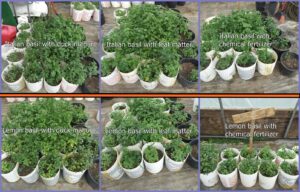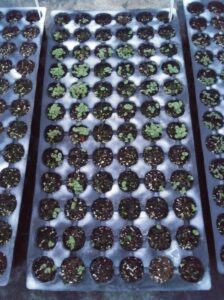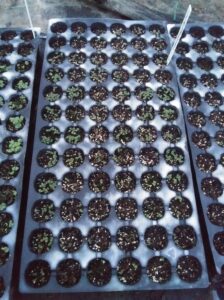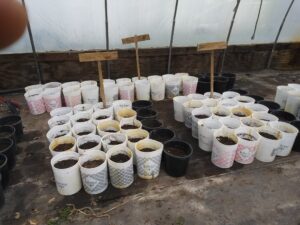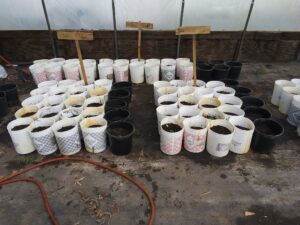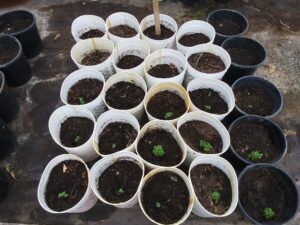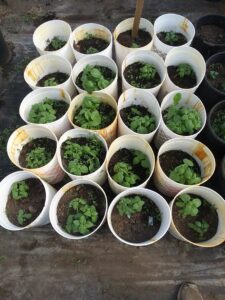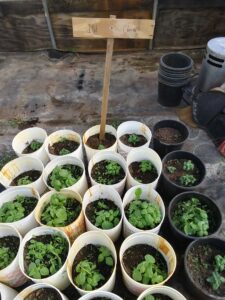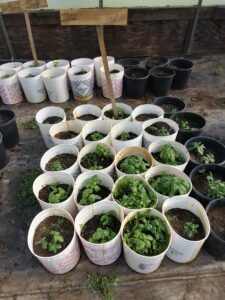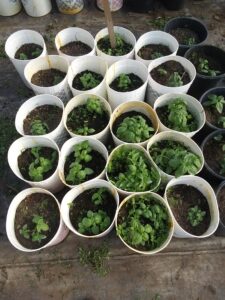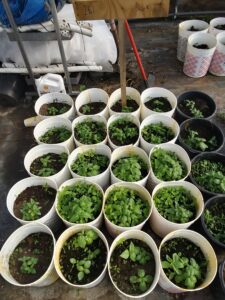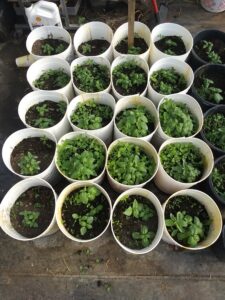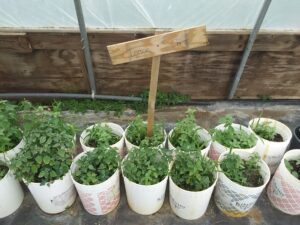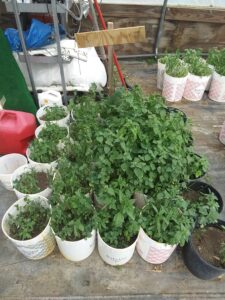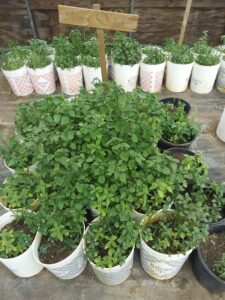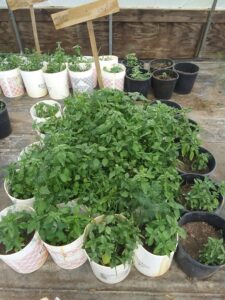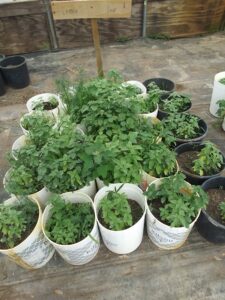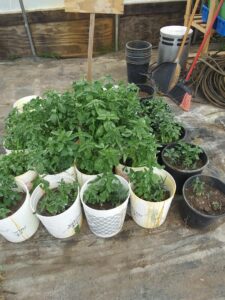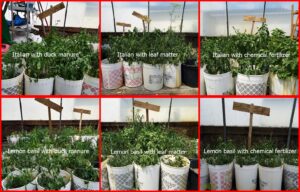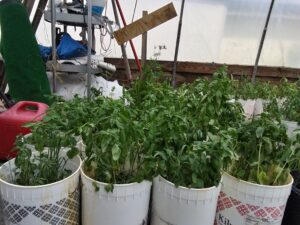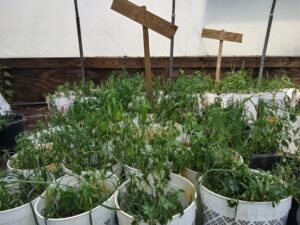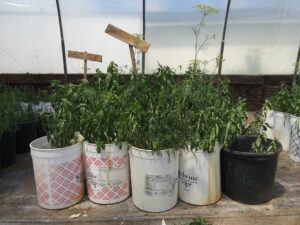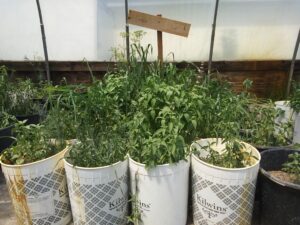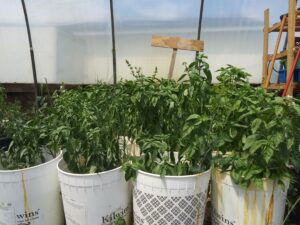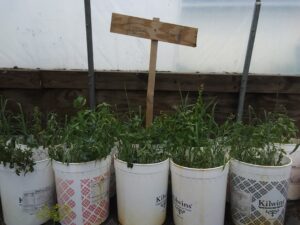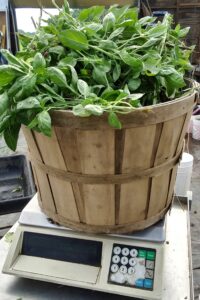Final report for FNC21-1296
Project Information
I have sustainably farmed without chemicals for 21 years. I use less costly and more manageable practices. I work 53 acres, 3 ½ on my home property in Grand Rapids and the rest in Carson City, MI. I sell primarily to restaurants. Before Covid-19 closed restaurants resulting in a low profit this year, my recent average yearly sales totaled $262,000. I have restaurant sales, commercial accounts, charities and schools, instructional classes, and CSAs. I sell a variety of fruits such as apples, peaches, plums, grapes, cherries strawberries, raspberries; vegetables such as carrots, tomatoes, peppers, okra, onions, garlic, cabbage, egg plants, corn, potatoes, sweet potatoes; and herbs such as rosemary, basil, thyme, mint.
The problem is that local farms lack high quality chemical free soil. By testing leaf matter's affect on basil, we hope to prove that leaf matter makes the best natural fertilizer and encourage farms to use it.
We want to encourage the use of leaf matter as compost, which is ecologically sound by improving soil. It is economically viable because it can increase quantity of crop production; farms will benefit with richer harvests. Finally, it is socially responsible by reducing yard waste and instead reusing it.
- Demonstrate the value of leaf matter by comparing its results versus other forms of fertilizer.
- Share the findings with local farms and customers.
Research
I will be planting lemon basil and Italian basil. I wanted simple crops that are easy to use, easy to plant, and accessible to people. Basil also has low disease and high nutrient value as well as a popular flavor. People use a great deal of this for seasonings such as pesto. It’s also common in stores, so we’re trying to provide it to our customers at a reduced price.
I will be planting six plots, half lemon basil and half Italian basil. Within each half, I will have three parts based on the fertilizer (purchased organic, mixture of duck and cow manure, leaf matter). Each section will have a 5’x5’ collection of 2 gallon buckets, for a total of 150 ft2.
I will share my findings in late May, 2021 at my farmer’s market on Leonard St, Grand Rapids and at my farm store. I will also report findings at the CSA Open House at the Grand Rapids downtown market in March, 2022.
We created a flyer that outlined our methods. (please see outreach section for further detail)
Grant Flyer (BEST)--experiment 1
We collected leaves from anyone who didn't want theirs, so long as they did not use chemicals. Once we had piles of leaves, we'd let them sit over winter, then till them under when we prepared the soil for planting. We didn't rake or gather the leaves ourselves, though other farmers definitely could in order to reap the benefits. And with a tractor, tilling the leaf matter into the soil is pretty quick, labor minimal.
With chemical fertilizer, I just followed the directions. I used Smith Douglass, 12-12-12.
I had waited for duck manure 90 days, according to what my grandfather and father had done. I wanted to avoid nitrogen poisoning. I mixed 2 pounds of woodchips/leaves/straw with 1 pound duck manure. I divided this into two 2.5 gallon buckets and filled the rest with water. This was added to the soil before planting. Mixing with wood chips, ground leaves, and straw made it easier to handle. Since the duck manure was also mixed in water, it permeated the soil better. Then as the basil grew, I saw that more was not necessary based on the rate of growth. So, I did not add anymore after planting. Again, I did not want nitrogen poisoning, and it would not leech out as fast from duck manure as from chemical fertilizer.
Compared to that, I could see that chemical fertilizer was needed. This is why I continued adding the mixture every other day for three weeks. I used about 1 1/2 quarts per area of 25 buckets, totaling 3 1/2 quarts of the mixture for all the chemically fertilized basil.
We based our results on the weight of the basil harvests.
Sweet basil
3rd place, with duck manure—53.03 oz
2nd place, only leaf matter—76.04 oz
1st place, with chemical fertilizer—82.87 oz
Lemon basil
3rd place, with duck manure—18.4 oz
2nd place, with chemical fertilizer—18.6 oz
1st place, only leaf matter—29.99 oz
Educational & Outreach Activities
Participation Summary:
Consulations:
We gave consulations to three groups. First, we updated the Agricultural Stabilization and Conservation Service (ASCS) on our experiment and answered their questions.
Second, we hosted a group from Calvin College’s agricultural program. This had 1 professor and around 11 students. They asked all kinds of questions and were so surprised with the experiment, especially considering how it did not match what they were learning about conventional farming. A lot of students were curious about how we got so many leaves to break down. After all, we had piles of leaves several feet high in the fields. They tried samples and stayed for a couple hours.
Third, once we posted about our experiment, we were contacted by a high school student from Grandville named Beverly. She did an interview with us over the phone for a class project.
Curricula, factsheets or educational tools:
We kept our FaceBook followers up-to-date with 6 posts about our experiment. These explained why we chose this experiment, showed pictures of the basil growing, and gave stats of the basil as it was picked.
Journal articles:
We have a contract with Mother Earth News to publish about our experiment and the results. The article will run next fall.
Published press articles, newsletters:
We published a newsletter for our customers and CSA members which we passed out after the final weigh-in of the basil. This same newsletter will be shared at the CSA Open House at the Grand Rapids downtown market in 2022.
Tours:
90 people participated in tours of the green house. They were able to learn about the experiment, ask questions, and even pick some basil to enjoy!
Learning Outcomes
This experiment supported what we thought all along, that leaf matter is an important source of minerals and can compete with other forms of fertilizer. The results of the experiment are as follows:
Sweet basil
3rd place, with duck manure—53.03 oz
2nd place, only leaf matter—76.04 oz
1st place, with chemical fertilizer—82.87 oz
Lemon basil
3rd place, with duck manure—18.4 oz
2nd place, with chemical fertilizer—18.6 oz
1st place, only leaf matter—29.99 oz
There were several advantages of this type of experiment. It affected future profitability of our basil, as we found that leaf matter was cheaper to use than chemical fertilizer while giving a similar harvest. The size of the harvest showed the health of the soil. An additional advantage was being able to share the basil with customers. Because of many restaurants struggling, we had difficulty comparing profit, so we decided to treat customers at the farm store to free basil.
There were also a couple disadvantages. Because of covid slowing everything down, we were not able to get our soil tested in time to compare it before and after. The experiment was also limited to a single crop, so further studies are necessary on other crops.
But after this experiment, we can confidently recommend leaf matter as a viable alternative to other fertilizers, especially those with negative side effects.
Project Outcomes
We recommend further studies comparing the use of leaf matter, chemical fertilizer, and manure. It would be interesting to see how other crop families handle the difference, especially for plants like cabbage or tomatoes.
